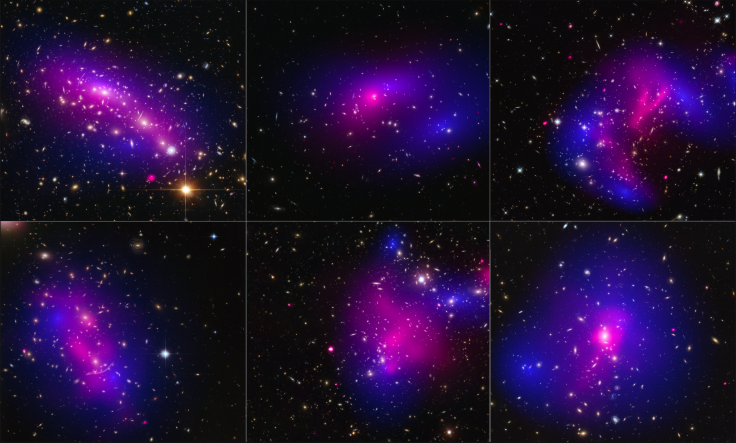What Is Dark Matter? Colliding Galaxy Clusters May Help Find Answer

Astronomers have used data from NASA’s Hubble Space Telescope and the Chandra X-ray Observatory to find that dark matter interacts with itself less than previously thought. In an effort to learn more about dark matter, astronomers observed how galaxy clusters collide with each other -- an event that could hold clues about the mysterious invisible matter that makes up most of the mass of the universe.
As part of a new study, published in the journal Science on Thursday, researchers used the Hubble telescope to map the distribution of stars and dark matter after a collision. They also used the Chandra observatory to detect the X-ray emission from colliding gas clouds.
“Dark matter is an enigma we have long sought to unravel,” John Grunsfeld, assistant administrator of NASA’s Science Mission Directorate in Washington, said in a statement. “With the combined capabilities of these great observatories, both in extended mission, we are ever closer to understanding this cosmic phenomenon.”

According to scientists, galaxy clusters are made of three main components -- galaxies, gas clouds and dark matter. During collisions, the gas clouds bump into each other and gradually slow down. Galaxies, on the other hand, are much less affected by this process, and because of the huge gaps between the stars within them, galaxies do not slow each other down.
“We know how gas and stars react to these cosmic crashes and where they emerge from the wreckage,” David Harvey of the École Polytechnique Fédérale de Lausanne in Switzerland, and the study’s lead author, said in the statement. “Comparing how dark matter behaves can help us to narrow down what it actually is.”
The researchers studied 72 large galaxy cluster collisions and found that, like galaxies, the dark matter continued straight through the collisions without slowing down much, meaning that dark matter do not interact with visible particles.
“There are still several viable candidates for dark matter, so the game is not over. But we are getting nearer to an answer,” Harvey said.
© Copyright IBTimes 2025. All rights reserved.






















